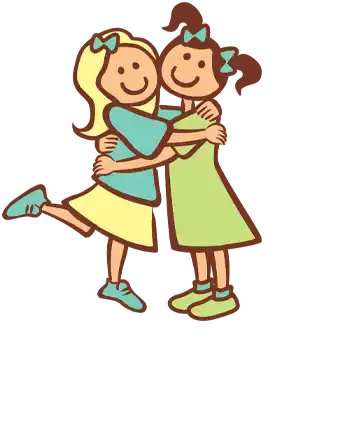A Warm Embrace for All
Every January 21st, people around the world celebrate National Hugging Day, a day dedicated to the simple yet powerful act of giving and receiving hugs. Whether it’s a bear hug, a side hug, or the ever-awkward one-arm hug, this day is all about spreading love, comfort, and connection. But how did this delightful day come to be, and why are hugs so universally cherished? Let’s wrap our arms around the story of National Hugging Day and the science (and humor) behind this heartwarming tradition.
 The Origin of National Hugging Day
The Origin of National Hugging Day
National Hugging Day was created in 1986 by Kevin Zaborney, an American who believed the world needed more genuine human connection. Observing that people often felt down in the post-holiday slump of January, Zaborney decided to promote hugs as a way to lift spirits and improve relationships. He chose January 21st because it fell between the holidays and Valentine’s Day, a period when people often feel emotionally low. The idea caught on quickly, as people from all walks of life recognized the universal appeal of a hug.
The simplicity of National Hugging Day is part of its charm. Unlike many celebrations tied to commercialism, this day doesn’t require purchases or elaborate plans—just open arms and a willing recipient. Over the years, it has grown from a localized observance to an internationally celebrated day, proving that sometimes the most heartfelt gestures are the ones that resonate the most. Zaborney’s mission wasn’t just about hugs; it was about fostering a culture of kindness, connection, and genuine care for one another. And in a world that often feels chaotic, taking a moment to celebrate a simple act like hugging reminds us of the humanity we all share.
The Science of Hugs
Hugs aren’t just good for the soul; they’re also great for your health. When you hug someone, your body releases oxytocin, often referred to as the “love hormone.” This chemical helps reduce stress, lower blood pressure, and even improve your immune system. Hugs also decrease levels of cortisol, the stress hormone, making them a natural antidote to a tough day.
Researchers have found that a 20-second hug can have lasting effects on your mood and well-being. Think of it as a mini workout for your emotions: no gym membership required! And don’t worry if you’re not a “hugger” by nature—even a brief embrace or a good old-fashioned pat on the back can trigger these feel-good benefits.
Hugs also play a vital role in human development. Studies have shown that physical touch, including hugging, is essential for babies’ growth and emotional health. Skin-to-skin contact helps regulate a baby’s temperature, heart rate, and stress levels, setting the foundation for a lifetime of emotional resilience. For adults, the benefits extend to fostering trust and deepening emotional bonds, making hugs an invaluable tool for healthy relationships.
Interestingly, hugging doesn’t just benefit the person being hugged; it’s a two-way street. The hugger also experiences the same surge of oxytocin and emotional uplift, creating a shared moment of connection. In a way, a hug is like a mutual gift, giving both participants a moment of shared comfort and positivity.
Science even suggests that hugging might have social benefits beyond the personal. Regular huggers are often perceived as more approachable and trustworthy, traits that can lead to stronger social networks and a greater sense of community. So, the next time you’re feeling down or disconnected, consider giving (or asking for) a hug—it’s nature’s simplest and most effective therapy.
The Art of the Perfect Hug
Not all hugs are created equal. There’s the “I’m-here-for-you” hug, the “I-haven’t-seen-you-in-years” hug, and the “Please-don’t-make-this-weird” hug. Mastering the art of hugging involves reading the room and tailoring your approach. Here are a few tips to ensure your hugs are a hit:
- Read the Signals: Not everyone is a fan of hugging. Look for open body language or verbal cues before diving in for an embrace.
- Timing Matters: A quick squeeze says “hello,” but a lingering hug conveys deeper emotion. Find the balance to avoid awkwardness.
- Avoid the Back Pat Overload: A few gentle pats are fine, but don’t turn the hug into a drum solo.
 Hugging Around the World
Hugging Around the World
Hugs are universal, but cultural differences can add a layer of complexity. In some countries, a warm hug is a standard greeting, while in others, it might be reserved for close family and friends. For example:
- In Latin America, hugs often come with a friendly cheek kiss.
- In Japan, bowing is more common than hugging, but younger generations are warming up to the idea.
- In Scandinavia, hugs tend to be more reserved, reflecting their preference for personal space.
Wherever you go, the message is clear: a hug transcends language barriers and speaks to our shared humanity.
Hugging in the Digital Age
As we spend more time communicating through screens, the need for physical connection has never been greater. Virtual hugs and emojis are sweet, offering a symbolic gesture of care, but they can’t replace the warmth of a real embrace. National Hugging Day reminds us to step away from our devices and connect with the people around us—even if it’s just for a moment. Physical touch plays a crucial role in building trust and strengthening relationships, something no number of text messages can achieve. So while it’s tempting to send a ":hug:" emoji, remember that there’s no digital substitute for the real thing: a genuine, heartfelt hug that conveys warmth and understanding in ways words never can. In a world increasingly driven by technology, hugs are the unplugged antidote we all need.
Hugging Gone Wrong
Of course, not all hugging stories are heartwarming. Who hasn’t experienced the dreaded “hug misfire”? Maybe you’ve gone in for a hug only to realize the other person was aiming for a handshake, resulting in a confusing hybrid move that neither of you will forget anytime soon. Or perhaps you’ve misjudged the hug strength and accidentally turned a friendly squeeze into a chiropractic adjustment. Then there’s the timing—hugging someone for just a beat too long can quickly turn a touching moment into an uncomfortable standoff. And let’s not forget the unexpected sneeze mid-hug, which instantly changes the vibe from “aww” to “eww.” These moments, though awkward, often become cherished memories that bring a smile for years to come. After all, life is all about finding humor in the unexpected, even if it’s in the form of a poorly executed hug.
How to Celebrate National Hugging Day
Celebrating National Hugging Day doesn’t require grand gestures or elaborate plans. The beauty of this day lies in its simplicity: taking a moment to share warmth, comfort, and connection with those around you. Whether you’re a natural hugger or someone who needs a bit of encouragement, there are countless ways to embrace the spirit of this day.
- Hug Your Loved Ones: Start with the people closest to you—family, friends, and even your pets. Yes, hugging your dog or cat counts (if they’re willing participants).
- Offer Hugs to Those in Need: Sometimes, a simple hug can make someone’s day. Just be sure to ask first!
- Spread Awareness: Share the joy of National Hugging Day on social media with a heartfelt post or a funny meme.
- Host a Hug-a-Thon: Organize an event in your community or workplace to celebrate the power of human connection.
National Hugging Day is more than just an excuse to embrace your favorite people (though that’s reason enough). It’s a reminder of the importance of connection, kindness, and the little gestures that make life beautiful. Whether you’re a die-hard hugger or more of a “wave-from-afar” kind of person, this day invites us all to open our hearts—and our arms—to the people who matter most. So go ahead, give someone a hug. Who knows? You might just make their day… and yours.
Please Share our Content






 The Origin of National Hugging Day
The Origin of National Hugging Day Hugging Around the World
Hugging Around the World








 "Sláinte!" is a traditional Irish expression used as a toast, equivalent to "Cheers!" in English.
"Sláinte!" is a traditional Irish expression used as a toast, equivalent to "Cheers!" in English.